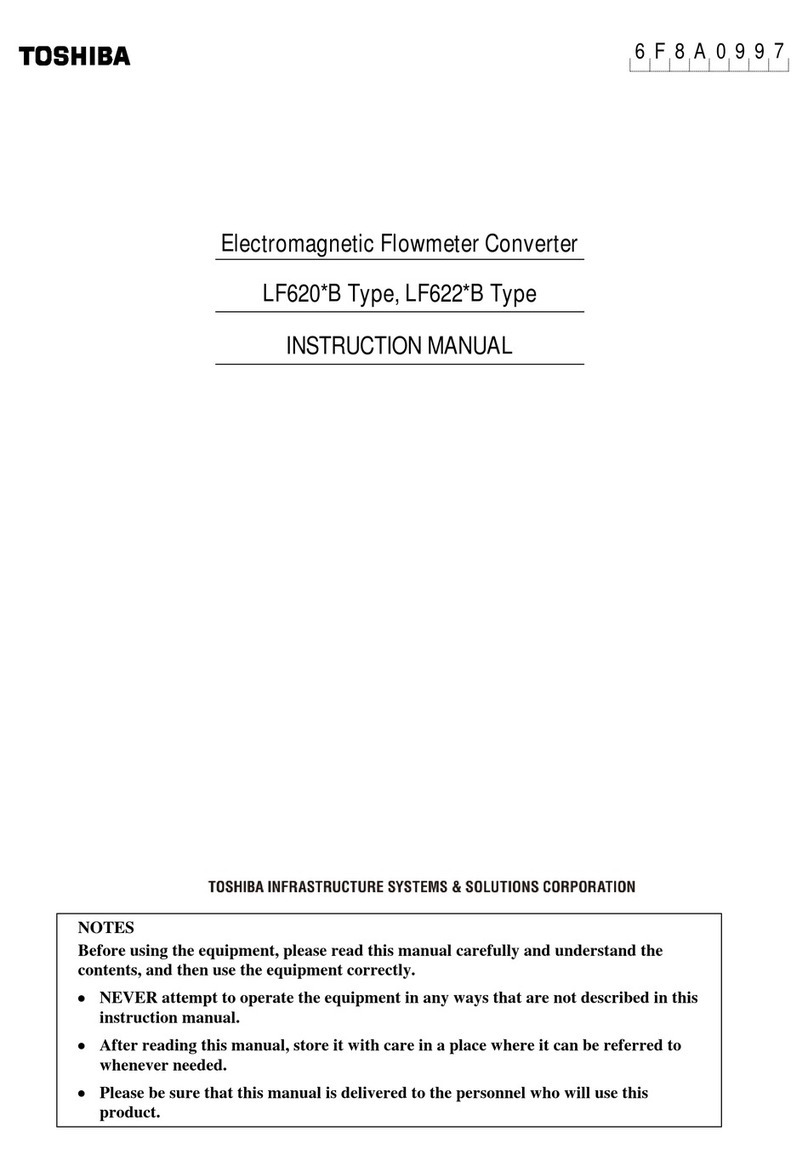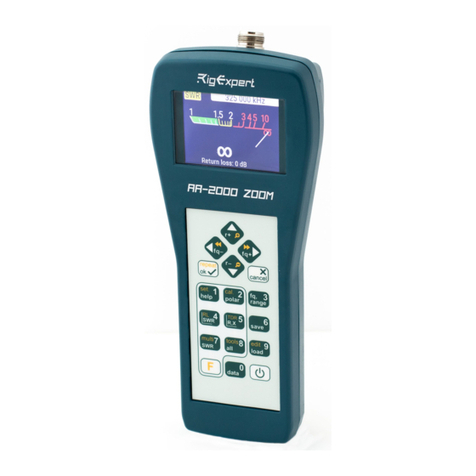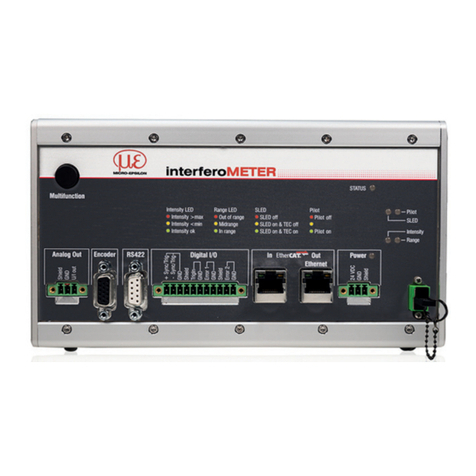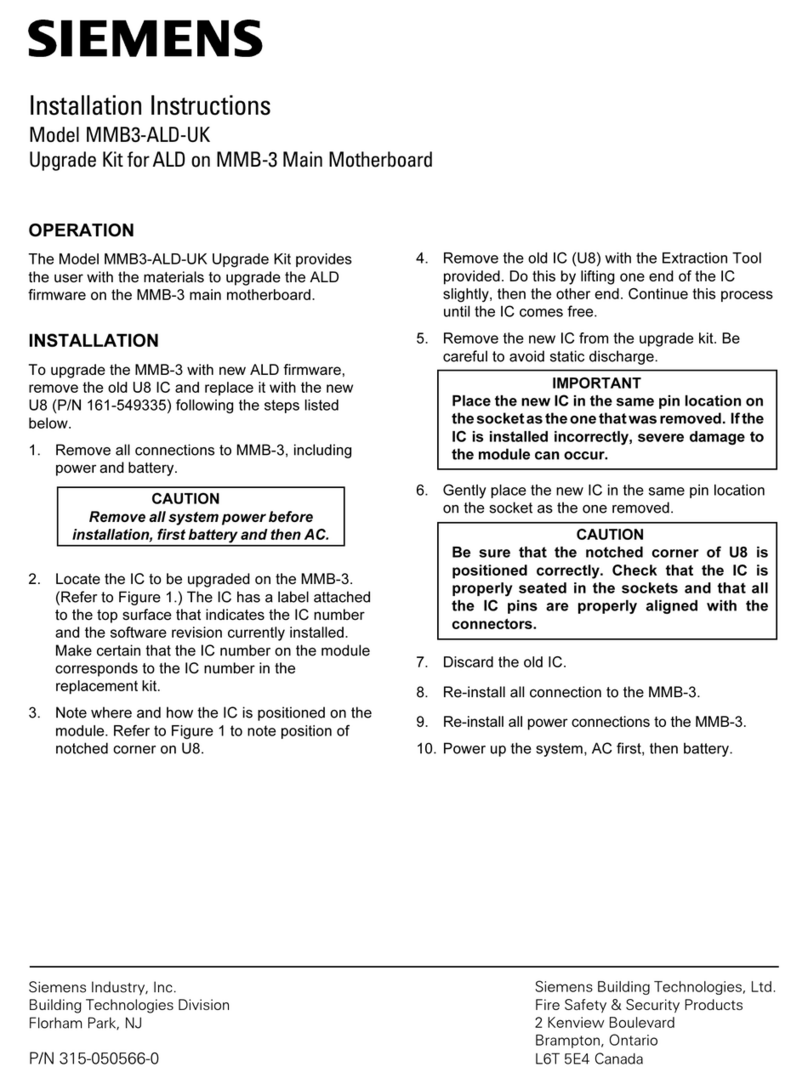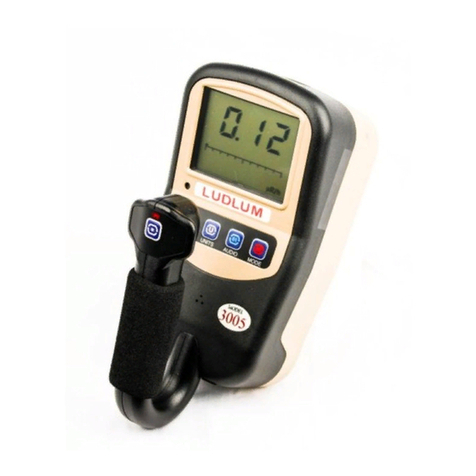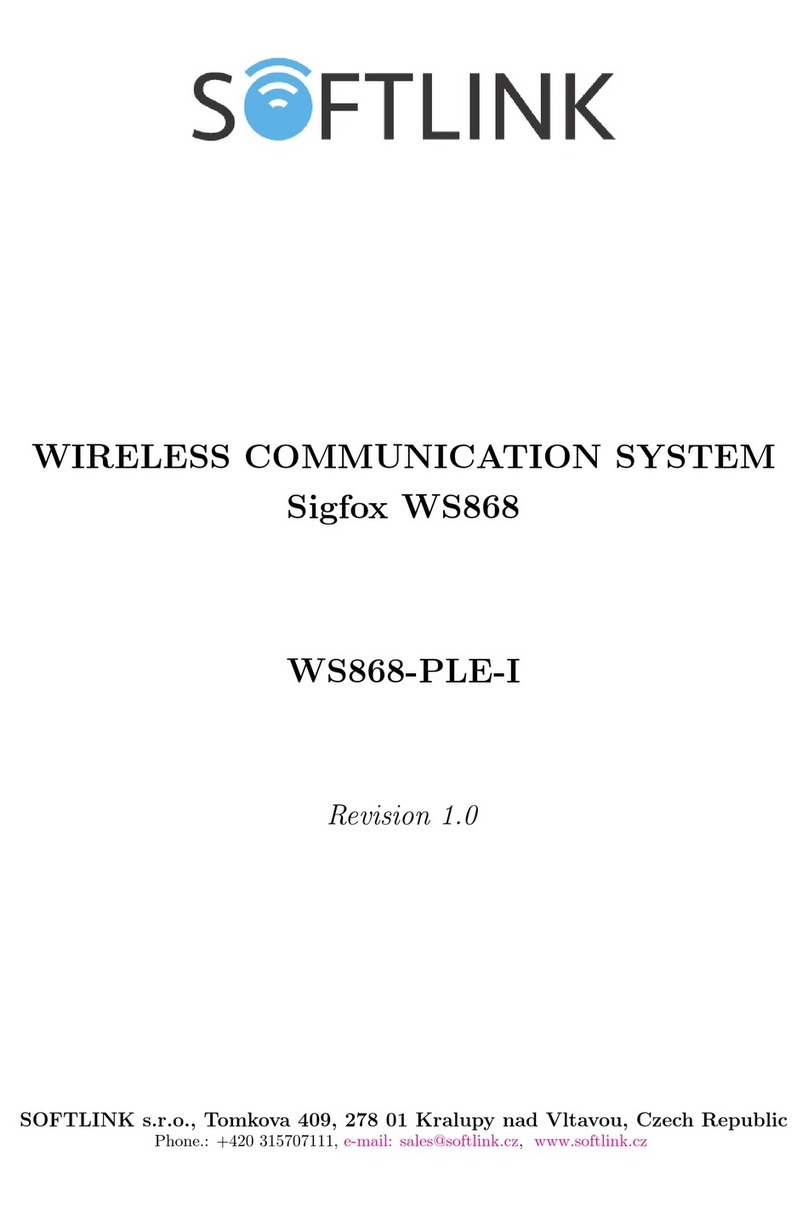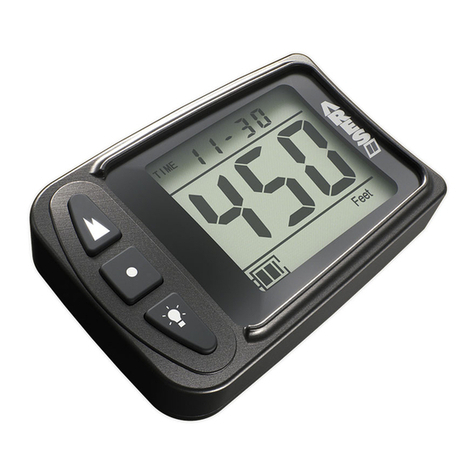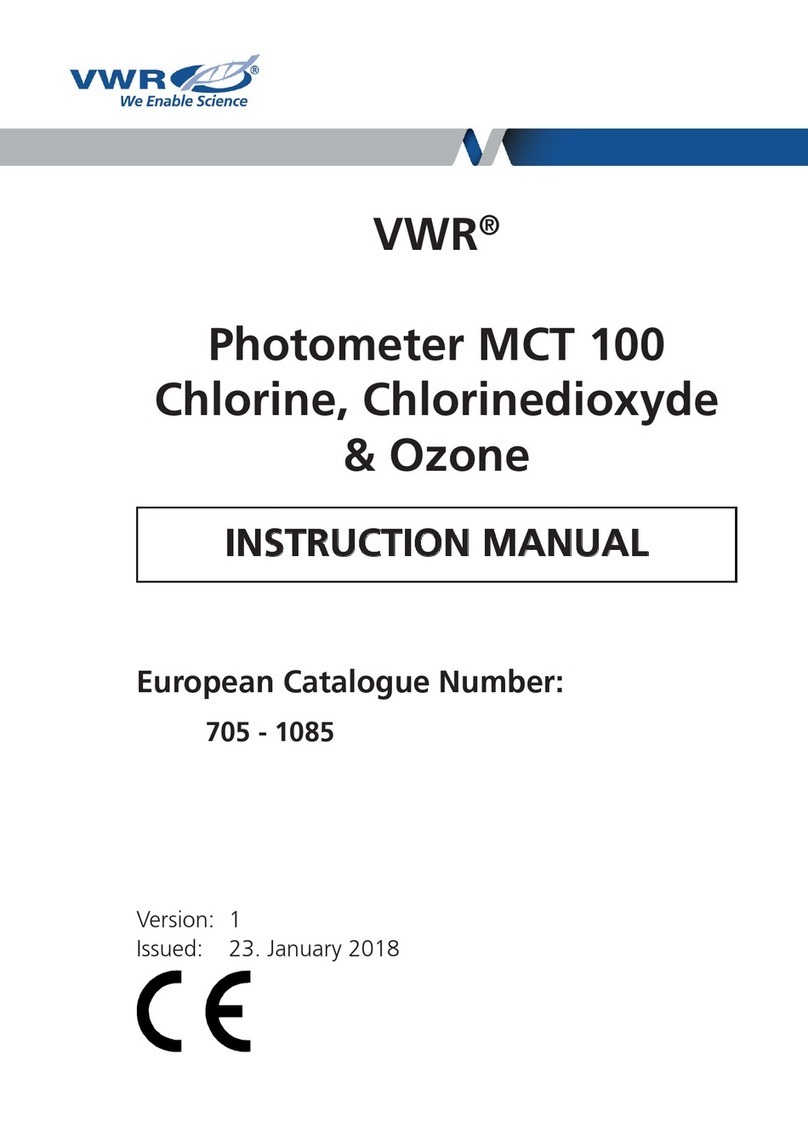New Cosmos Electric SDM-73 User manual

SDM-73
Portable Oil Steel Dust Checker
Model SDM-73
Instruction Manual
Please keep this instruction manual available for quick reference
when needed.
Before use, carefully read this instruction manual and fully
understand the content.
Instruction Manual No.: SDM-73CEET

- TABLE OF CONTENTS -
1. Introduction
2. Features
3. Safe Operation
4. Component Names and Functions
4-1. Exterior View
4-2. Component Names and Functions
5. Operation Procedures
5-1. Installing Batteries
5-2. Battery Check
5-3. Measurement
5-4. Collection of Oil Sample
6. Troubleshooting
7. Specifications
8. Warranty
Appendix
1. Measuring Principle
2. Metal Materials Measurable
3. Practical Use
1
1
2
3
4
5
6
7
9
10
12
13
14
15
16

1
1. Introduction
We thank you for purchasing the Portable Oil Steel Dust Checker Model
SDM-73 for the measurement of steel dust in the lubricating oil.
The Oil Steel Dust Checker employs a magnetic balance type
electromagnet induction method as the measuring principle, and is a
useful simplified diagnosis tool for the inspection of the abrasion status
of the bearings and gears, cylinders, etc.
The steel dust can be measured simply by collecting from the oil
sample in a sampling syringe.
This Manual describes the specifications, functions and operating
instructions, carefully read and thoroughly understand this manual
before operating the Oil Steel Dust Checker SDM-73.
2. Features
The employed magnetic balance type electromagnetic induction
method is a highly sensitive for the detection of the abrasion in
the initial stage.
Suitable for diagnose of irregularity in the ultra slow speed
revolution range where diagnosis by vibration method is difficult.
Very simple operation.
Only requiring the sampling container to be filled with the sampled
oil and inserted for instant measurement.
Compact portable instrument and useful for field measurement.

2
3. Safe Operation
Read and understand the contents of the manual before operating the
instrument. The following safety symbols are used in this manual and must be
observedwithoutfail:
!
Warning
WARNING indicates a situation, which if not avoided,
could result in malfunction or abnormal performance of
theinstrument.
!
Caution
CAUTION indicates a situation, which if not avoided may
cause damage to the instrument, or an accurate
measurementmaynotbeobtained.
Memo MEMOindicates operationaladviceandorinstructions.
!
CAUTION
▪This instrument is not explosion-proof. It must be used in a safe
location.
▪Removethebatteriesand storetheinstrument if it isnot be usedfora
longtime.
▪Do not disassemble or modify the instrument or change the structure
or electric circuits.
▪Do not leave the instrument in high-temperature or highly humid
places.
▪Keep the instrument away from radical temperature or humidity
changes, walkie-talkie, mobile phone, or its performance may be
adverselyaffected.
▪Do not drop, hit, or apply a strong mechanical shock to the
instrument,or itsperformancemaybeadverselyaffected.
▪This instrument is not drip-proof. Keep the instruments away from
water.
▪Do not wipe the instrument with a wet cloth or cloth containing a
solvent.Wipetheinstrumentgentlywithasoftclothwhenitis dirty.
▪Be sure to keep the sampleinsert port clean.Correct reading cannot
be obtained when it is smeared with oil, etc. as there is an optical
sensor to detect the sampling syringe. (Wipe away a smear with a
cottonswab orsoftcloth.)

3
4. Component Names and Functions
4-1.Exterior View

4
4-2. Component Names and Functions
No.
Controls Functions
1 Change-over
selector switch
Rotate the switch to “MEAS” position to
commence measurement, with the sampling
syringe removed from the instrument.
To check the voltage level of the batteries,
rotate the switch to “BATT” position.
2 Sample insert port
Insert port for sampled oil.
The measurement of the steel dust is
conducted when the sampling syringe is
inserted, while the selector switch is set at
“MEAS” position.
3 BATTERY alarm lamp
To indicate the low battery status, when the
battery voltage becomes lower than 3.6V,
the alarm lamp will turn ON.
4 LCD display The display will indicate a digital reading of
the steel dust in the sampled oil. Also, to
indicate the reading of battery voltage.
5 DC jack The exclusive jack to accept the plug of the
AC Adapter.
6 Calibration date label Label to indicate calibration date.
7 Battery compartment The battery compartment accommodates 4
AA size dry batteries.
8 Sampling syringe
(2ml) A syringe to collect sampling oil.
9 Oil collection nozzle A nozzle for oil collection.
10
Syringe holder
11
AC adapter
for 100V AC Exclusive AC adapter. (Option)

5
5. Operation Procedures
5-1. Installing Batteries
Open the battery compartment cover located on the lower right side
of the instrument, press and slide off the cover, secure a fresh set
of 4 AA size (LR6) alkaline dry batteries, and carefully observe the
battery polarity illustration inside the battery compartment to make
sure that the batteries are installed correctly. It is recommended
that a fresh new set of batteries be installed; do not use a set of
partial used and new batteries.
To close the battery compartment, place the cover on the batteries
leaving an opening of about 10mm, and while pressing the cover
downward push it forward to close the compartment.

6
5-2. Battery Check
Rotate the selector which from the “OFF” position to the “BATT”
position, the LCD display will indicate - - - - for a period of 2-3
seconds, then the voltage of the battery will be displayed.
Examples of battery voltage display.
(Battery voltage = 5.6V)
can be operated if the voltage is higher than 3.6V
the BATTERY alarm lamp will turn ON if the
voltage is lower than 3.6V and instrument can
not be operated. Secure a fresh set of batteries
and make replacements.
when the battery voltage drops below 3.2V, the
BATTERY alarm lamp will commence to blinking
with an audible buzzer sound.
Warning
Measurement conducted under low battery condition
will not provide an accurate or reliable reading.
In case the battery voltage should drop below 3.2V
during measurement at “MEAS”
mode, the
BATTERY alarm lamp will turn ON and the audible
alarm will sound.
b 5. 6
b 3. 6
b 3. 6
b 3. 2
Caution It is recommended to
replace the batteries with a
fresh set of 4AA size (LR6) alkaline batteries.
!
Memo
!

7
5-3. Measurement
1) Rotate the selector switch to “MEAS” and shift to the
measurement mode.
2) Check to see that the display
indicates 0.000 then insert the
sampling syringe with syringe
holder containing the sampled oil
into the sample port.
(Refer to 5.4 regarding procedures
for the collection of oil sample.)
3) An audible beep will sound for 2-3
seconds after the sampling syringe
with the holder has been inserted
indicating the measurement has
been completed, and the reading is
held, read and record the reading.
4) When the sampling syringe with the holder is removed from the
sample port, the display will return to zero 0.000 by the auto
zeroing adjustment function.
(Remove the syringe and holder together.)
5) After the measurement has been completed, make sure to return
the selector switch to “OFF” position.

8
Caution
Always insert the sampling syringe with holder, and remove them together
gently. Do not apply an impact when inserting the sampling syringe with
holder. If the insert is too slow, the reading may drift and may not be
accurate. In such case pull out the sampling syringe with the holder once
andreinsertforthemeasurement.
After the sampling syringe with the holder has been inserted for
measurement, do not move the instrument until the “BEEP” sound for the
completion of the measurement. If the instrument is moved the
measurementmaydrift.
Caution
This instrument employs the electromagnetic induction method as the
measuring principle, and should not be operated in the vicinity where a
strongelectromagneticwaveisgenerated.
(Example: inverter controlled motor, welding machine, electric spark
machine) It is recommended to conduct measurement in a location not
effectedbysuchelectricalequipment.
Do not operate the instrument in a location where walkie-talkie or cellular
phonemaybeused.
During measurement, do not use or place a metal tool (object) near the
sampleport.
If the collected sample oil is of high temperature, allow it to cool to normal
room temperaturebeforemeasurement.
Memo
Readings may vary when the size of steel dust is big or when steel dust
concentration is high, as the dust in the sampling oil shall be gradually
settled. In this case, shake the syringe and mix them well before
measurement. It is recommended to measure the value, placing the
instrumenthorizontally.
Readings obtained from sampling oil with steel dust generated under
normal wear are relatively stable. And readingsobtained from theoil with
steel dust generated under abnormal wear may vary, because size of dust
particleisnotequal anditaffectsthemeasurement.
Measure the value at least 3 – 4 times and take an average or maximum
value,asthereadingobtainedat1st measurementmay benotcorrect.
!
!

9
5-4.CollectionofOilSample
1) Collect the oil sample (approx. 10-30ml) from rotating portion of the
machinery and put it in asampling bottle. Collect the sampling oilfrom near
bottom sincesteel dust tendstosettle nearbottom.
2) Shake and mix the oil sample in the sampling bottle well. When the oil
viscosityishigh,stirtheoilwellbeforemeasurement.
3) After mixing the oil sample, collect 1.5ml oil sample in the syringe with oil
collection nozzle. Collect slightlylarger amount than 1.5ml, and remove the
airinsidethesyringeandadjusttheamountequalto1.5ml.
4) Remove the oil collection nozzle and wipe the tip of syringe with paper
towel,thenfitacap.
5) After shaking the syringe andmix the oil samplewell beforemeasurement.
Carryout themeasurementrightaftermixingtheoilsample.
Memo Syringe is a consumable part. Pay attention to the following.
When removing the oil sample stuck on the scale on the syringe, the scale may
vanish depending on the type of oil. Do not to put oils on the scale on the
syringe.
Discharge the oil sampleinthe syringe to thesampling bottle after measurement.
When it is kept in the syringe, the syringe may be deformed depending on the
typeofoil.
Do not put the tip of the syringe downwards after collecting the oil sample in the
syringe,sincesteeldustsmaysettleinthetipofthesyringe.
The syringe canbe used for the measurement 5-10 times. Replace the syringe
withanew onewhenthescalegrowsfaintandhardtoread 1.5ml scale.
Syringe
Sampling bottle
Oilcollectionnozzle
Oil sample
Cap
Syringe holder

10
6. Troubleshooting
Problems, which may be experienced during the use of the Oil Steel
Dust Checker SDM-73, are listed in the table below, together with
indications of probable cases and recommendations for corrective
actions. Contact our authorized distributor if your problem is not listed or
when the remedy fails to correct the problem.
Problem Cause Remedy
No indication appears on
the display when the
selector switch is set at
“BATT” or “MEAS” using
fresh set of batteries.
Bad battery
contacts.
The polarities of the
battery are not
correctly installed.
Take out the batteries
and reinstall. (page 5)
Reinstall the batteries
with the polarity
correctly positioned.
(page 5)
The battery alarm lamp
turns ON when selector
switch is set at “BATT”
or
“MEAS” using fresh set
of batteries.
The battery may be
installed with the
polarity in wrong
position.
Reinstall the batteries
with the polarity
correctly positioned.
(page 5)
The reading of the
display does not stabilize
or is not held when the
sampled oil is inserted.
The reading is held at an
unstable condition.
The sampled oil is of
high temperature
and cannot be
measured.
Measurement
conducted nearby a
source of strong
electromagnet wave.
(Inverter controlled
motor, etc.)
Cellular phone or
walkie-talkie used
while conducting
measurement.
Allow the sampled oil
to cool off and conduct
measurement. (page 8)
Move away from the
source of
electromagnet wave.
(page 8)
Turn OFF the cellular
phone or walkie-talkie
and perform
measurement. (page 8)

11
Flashing - - - - is
indicated on the LCD.
Turned Power ON
with the sampling
syringe with holder
inserted in the
instrument.
Remove the sampling
syringe with holder
from the instrument.
Even after the sampled
oil removed from the
sample port, the display
will not return to zero, or
flashing - - - - is
indicated.
No reading is obtained
after the sampled oil is
inserted in the
instrument.
Optical sensor to
detect the sampling
syringe is smeared
with oil, etc.
Only the sampling
syringe is removed
while the syringe
holder is in the
instrument.
Wipe away a smear
near the sample insert
port with a cotton swab
or soft cloth.
Always remove the
sampling syringe
together with the
syringe holder.

12
7. Specifications
Items Specifications Remarks
Model SDM-73
Measuring principle
Magnetic balance type
electromagnetic induction method.
To measure Concentration of iron particles in
the oil.
Measurement range
0 – 19999 ppm weight ratio
Display 4 1/2 digit liquid crystal display
Minimum resolution
1 ppm 0 ppm indicated
when the value is
less than 5 ppm.
Accuracy ±(10 %rdg + 10 dgts)
The analyzed value of standard oil
by atomic absorption method
%rdg =
measured value%
Zero adjustment Automatic adjustment
Sample volume 1.5 ml
Power requirement 4 AA size dry batteries
Battery life 30+ hours of continuous operation
using alkaline
batteries
Operating
temperature 0 to 40 degrees C
Dimensions 84W x 40D x 190H (mm)
Weight Approximately 480g
Approval CE (EMC Directive 2004/108/EC)

13
8. Warranty
New Cosmos Electric Company Limited (New Cosmos) offers the
following as the sole and exclusive limited warranty available to
Customer.
This warranty is in lieu of, and customer waives, all other warranties of
any kind or nature, expressed or implied, including without limitation,
any warranty for merchantability or fitness for a particular purpose. The
remedies set forth herein are exclusive.
New Cosmos warrants to the original purchaser and no other person or
entity (customer) that gas detection product supplied by New Cosmos
shall be free from defects in materials and workmanship for a period of
one (1) year from the date of purchase. This warranty does not include
consumables, such as fuses, filters, etc. Certain other accessories not
specifically listed here may have different warranty periods.
After examination of allegedly defective product return to New Cosmos,
with freight prepaid, should the product fail to conform to this warranty,
customer’s only remedy and New Cosmos’s only obligation shall be, at
New Cosmos’s sole option, replacement or repair of such
non-conforming product or refund of the original purchase price of the
non-conforming product. In no event will New Cosmos be liable for any
other special, incidental or consequential damages or losses of any kind
whatsoever, including but not limited to, loss of anticipated profits and
any other loss caused by reason of non-operation of the product.
This warranty is valid only if the product is maintained and used in
accordance with New Cosmos’s instructions and /or recommendations.
New Cosmos shall be released from all obligations under this warranty
in the event repairs or modifications are made by persons other than its
own or authorized service personnel or if the warranty claim results
from physical abuse or misuse of the product.

14
Appendix
Reference Materials
1. Measuring Principle
The measuring principle of the magnetic balance electromagnetic
induction method is shown in the illustration below, the magnetic
circuit sensor is composed of an exciter coil connected to the both
sides of the detection coil, the magnetic field generated by both
exciter coils are blanketed in the vicinity of the center detection coil.
Normally, the center detection coil does not generate an induction
voltage, on the other hand when the sampled oil containing iron
particles is inserted into the exciter coil, the magnetic field is offset
by the magnetic permeability variation, and an induction voltage is
generated in the detection coil. The induction voltage can measure
the concentration of the iron particles in the sampled oil.
Amplifier
circuit
Transmission
circuit
Sampled grease
Exciter coil 1
Output
Detection coil 2
Exciter coil 2

15
2. Metal Materials Measurable
Table 1 of Metal Materials that can be Measured
(○:Measurable, ×:Not measurable)
Metal and Materials Magnetism Measurable
Remarks
Iron, nickel, cobalt Ferromagnetism ○
Aluminum, chrome,
manganese, titan,
stainless steel
(SUS-304, SUS-316)
Para magnetism ×
Copper, silver, lead,
zinc, tin Diamagnetic ×
Iron oxide (α-Fe2O3)
Ferruginous
(Hydroxide iron) Para magnetism ×*1
Iron oxide
(γ-Fe2O3, Fe3O4) Ferromagnetism ○
Sodium, calcium,
lithium, molybdenum Para magnetism ×*2
*1: Iron oxide has several isomers, as can be noted from the table
above there are substance that can be measured with the Oil Steel
Dust Checker and substance that can not be measured. Specially in
case the environment allows the oxidation of iron particles easily
and where the collected sample contains red rust the measurement
conduct may indicate a reading lower than the actual concentration.

16
3. Practical Use
1) Management and Simplified Diagnosis of Oil Lubricated Bearings &
Gears
To be used to diagnose the steel dust contents in the oil used for
lubrication of low speed rotation to high speed rotation machinery.
Most useful for the diagnosis of the abrasion of the bearing and
gears used at low speed rotation and difficult to diagnose with the
vibration method, and to improve the accuracy of diagnosis when
jointly used with the vibration method for medium and high speed
rotation machinery.
Preliminary diagnosis for SOAPmethod, ferrography method, etc.
Useful tool for preliminary diagnosis as a cost saving for
maintenance.
Example of various use
Pumps & Motors Agitators Fan-blower・Compressor Cooling tower・Air fin cooler
Mixer・Kneader Rotary drier Paper-marking machinery Mill・Crusher・Refiner
Metal rolling machinery Conveyor Crane・Hoist・Lift Civil engineering machinery
Rolling stock・Elevator Escalator・Parking tower
Transportation Moving sidewalk

17
2) Criterion
The following table is an example of the criterion.
This criterion is relatively strict in order to carry out appropriate
corrective lubrication improvements, to detect the abnormal trend at
an early stage.
The criterion for the small sized machine is three times higher than
the one for the large sized machine. It is because oil bath type
lubrication and less filtering are frequently employed on the small
sized machine.
It is recommended to establish a suitable criterion to your machine,
by collecting the data and tendency from the machine although it
may sometimes be difficult as there are so many types of machines
and applications.
Table 3 Criterion of the Steel Dust Concentration in the Oil
Criterion (ppm)
Large sized
machine Small sized
machine Countermeasure
Normal
value Less than 30
Less than 100
Management of steel dust contents
in the oil at normal cycle
Precaution
value 30- 100 100- 300 Repeat lubrication and remeasure
the steel dust concentration 1
month later.
Irregular
value More than 100
More than 300
Countermeasure for improvement
of lubrication, precision diagnosis at
short cycle management.

Manual Revision History
Edition No. Date Change
SDM-73 CEET June, 2008
Additional copies of this operation manual are available.
Contact the following address for ordering information.
Distributor: Manufacturer:
New Cosmos Electric Co., Ltd.
2-5-4 Mitsuiya-naka,
Yodogawa-ku,
Osaka 532-0036, Japan
TEL: +81-6-6309-1505
FAX: +81-6-6308-8129
http://www.new-cosmos.co.jp/en/index.html
Table of contents
Other New Cosmos Electric Measuring Instrument manuals
Popular Measuring Instrument manuals by other brands
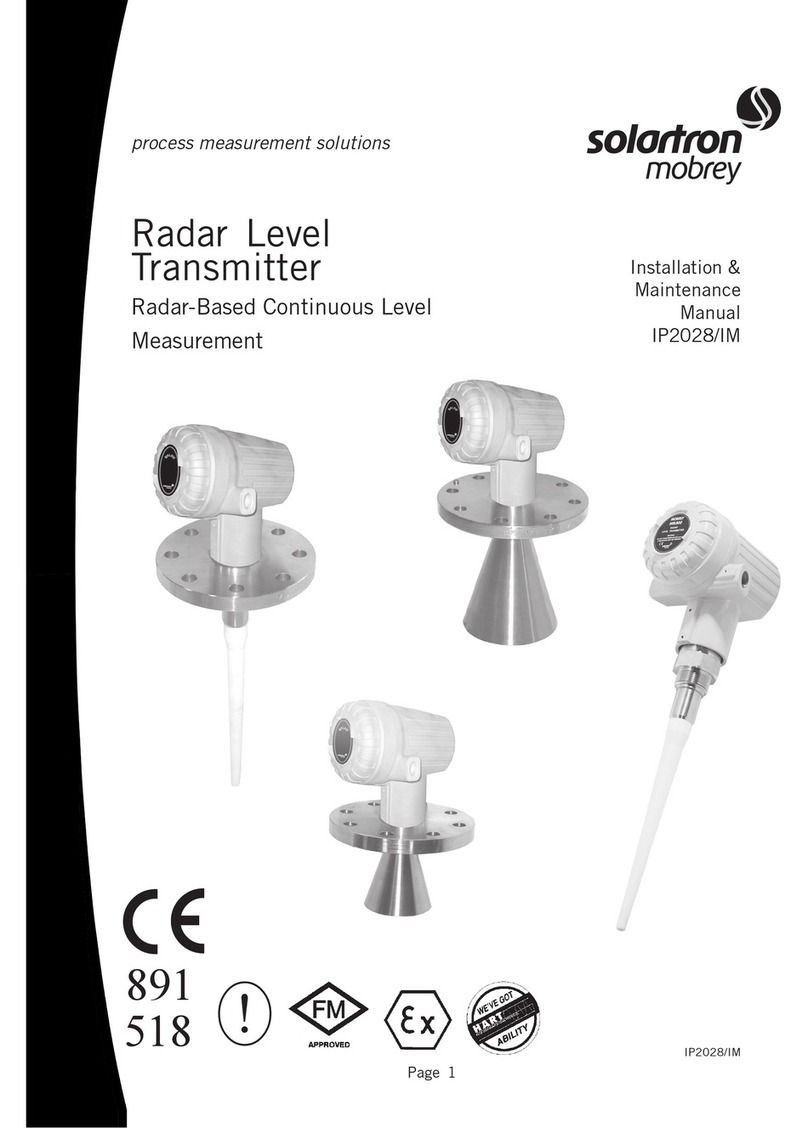
Solartron Mobrey
Solartron Mobrey MRL800 Installation & maintenance manual
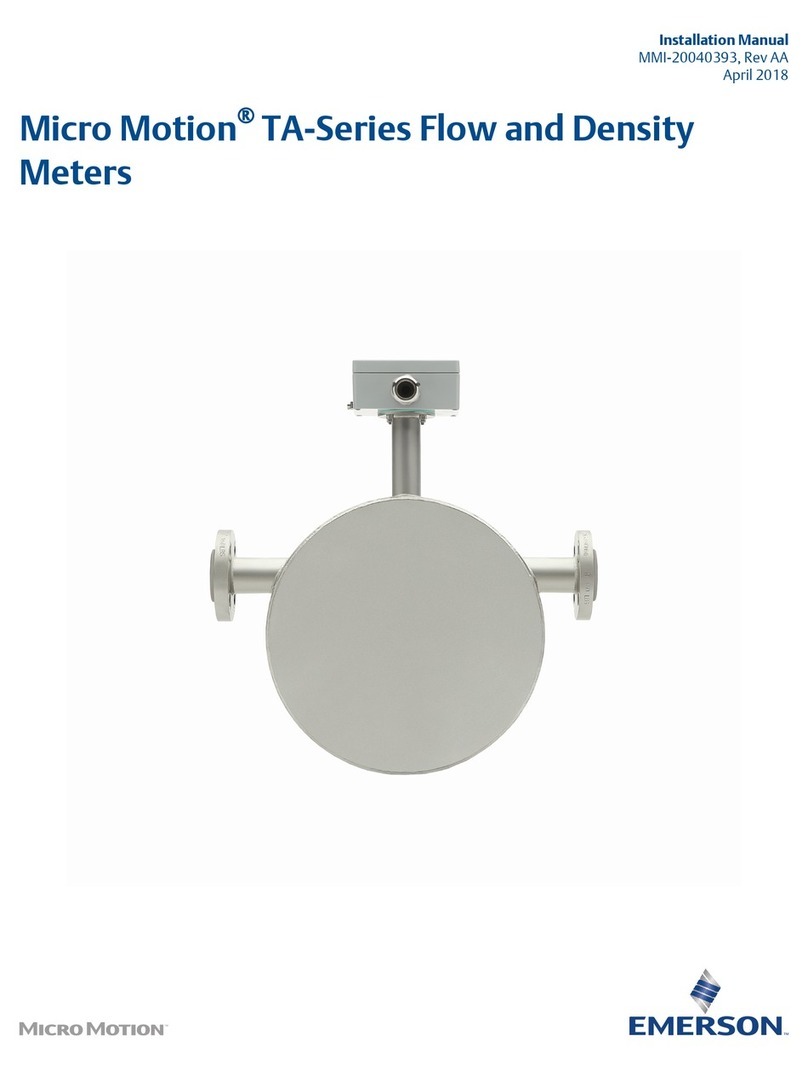
Emerson
Emerson Micro Motion TA Series installation manual
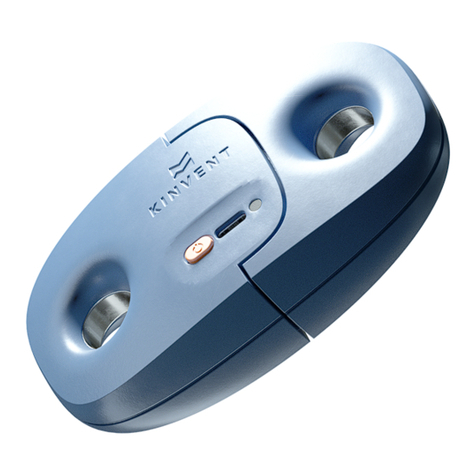
Kinvent
Kinvent K-Grip user guide
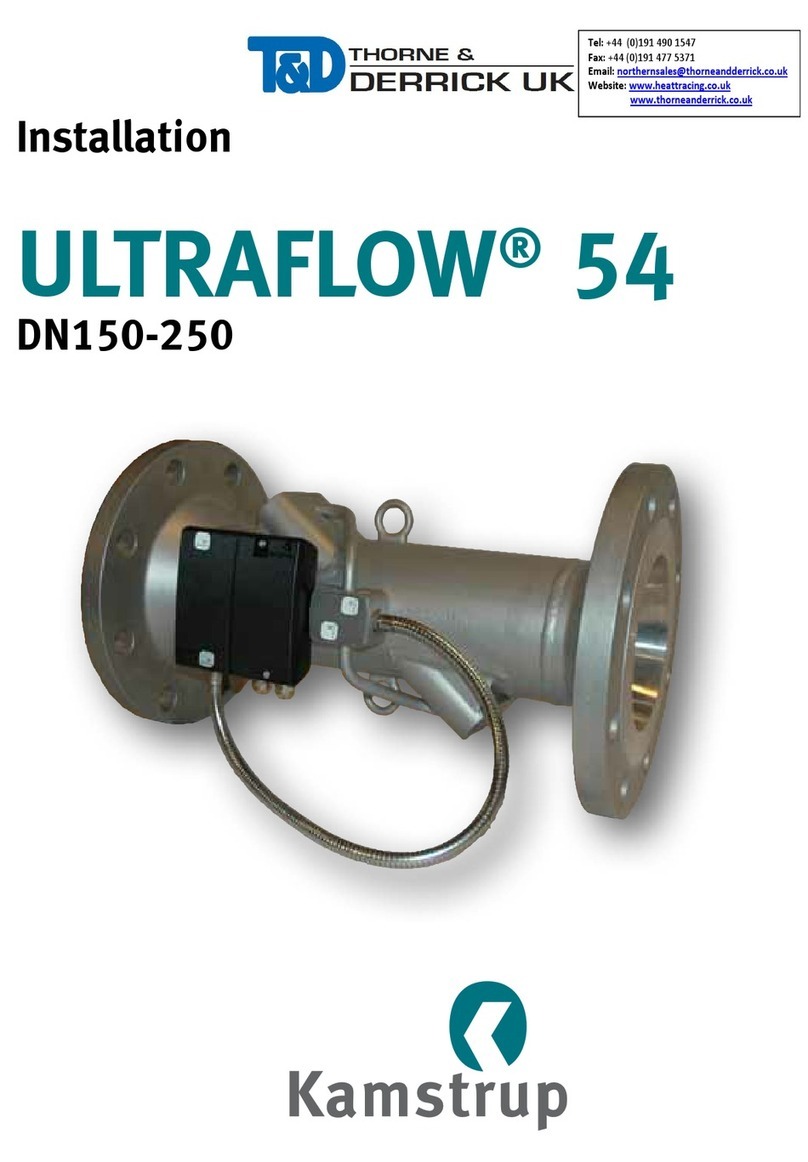
Thorne & Derrick
Thorne & Derrick Kamstrup ULTRAFLOW 54 Installation
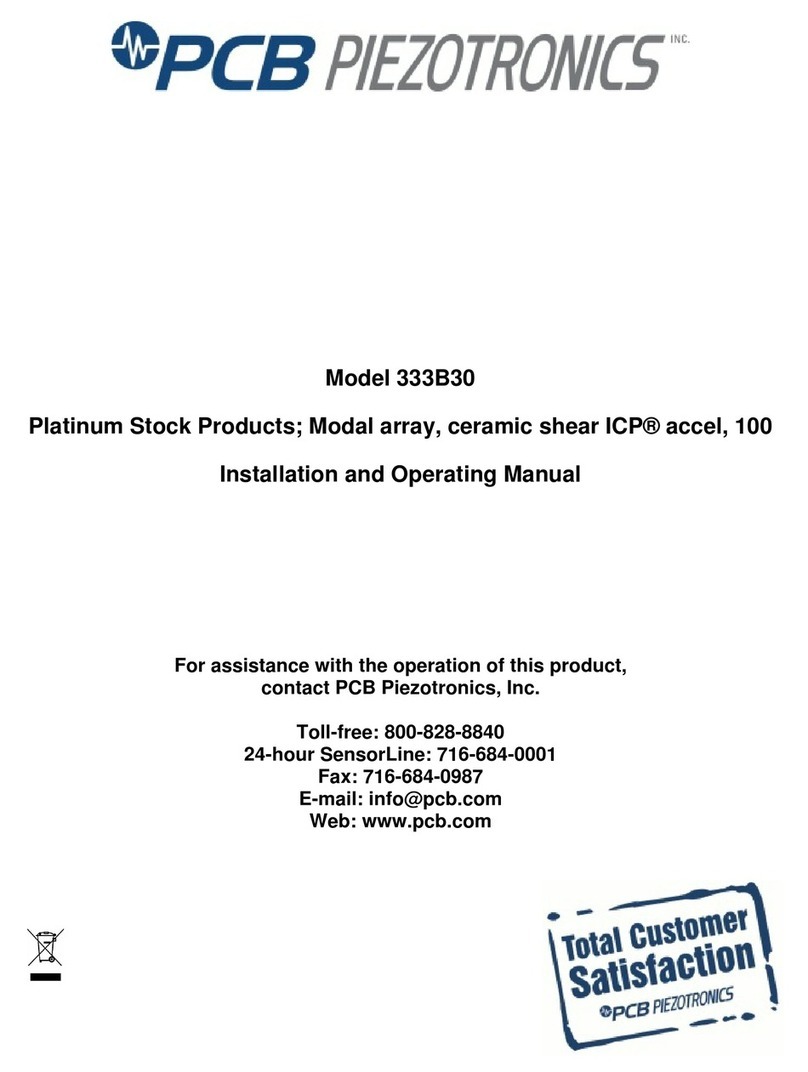
PCB Piezotronics
PCB Piezotronics ICP 333B30 Installation and operating manual
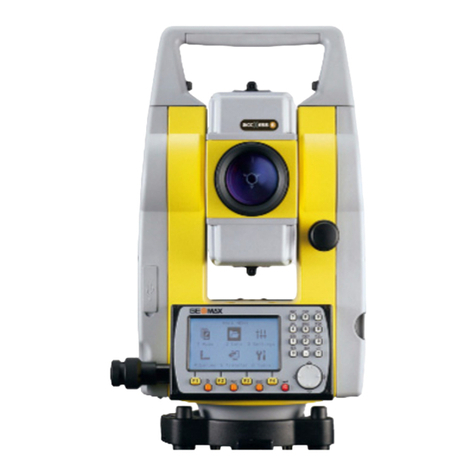
STONEX
STONEX R6 Series user manual


